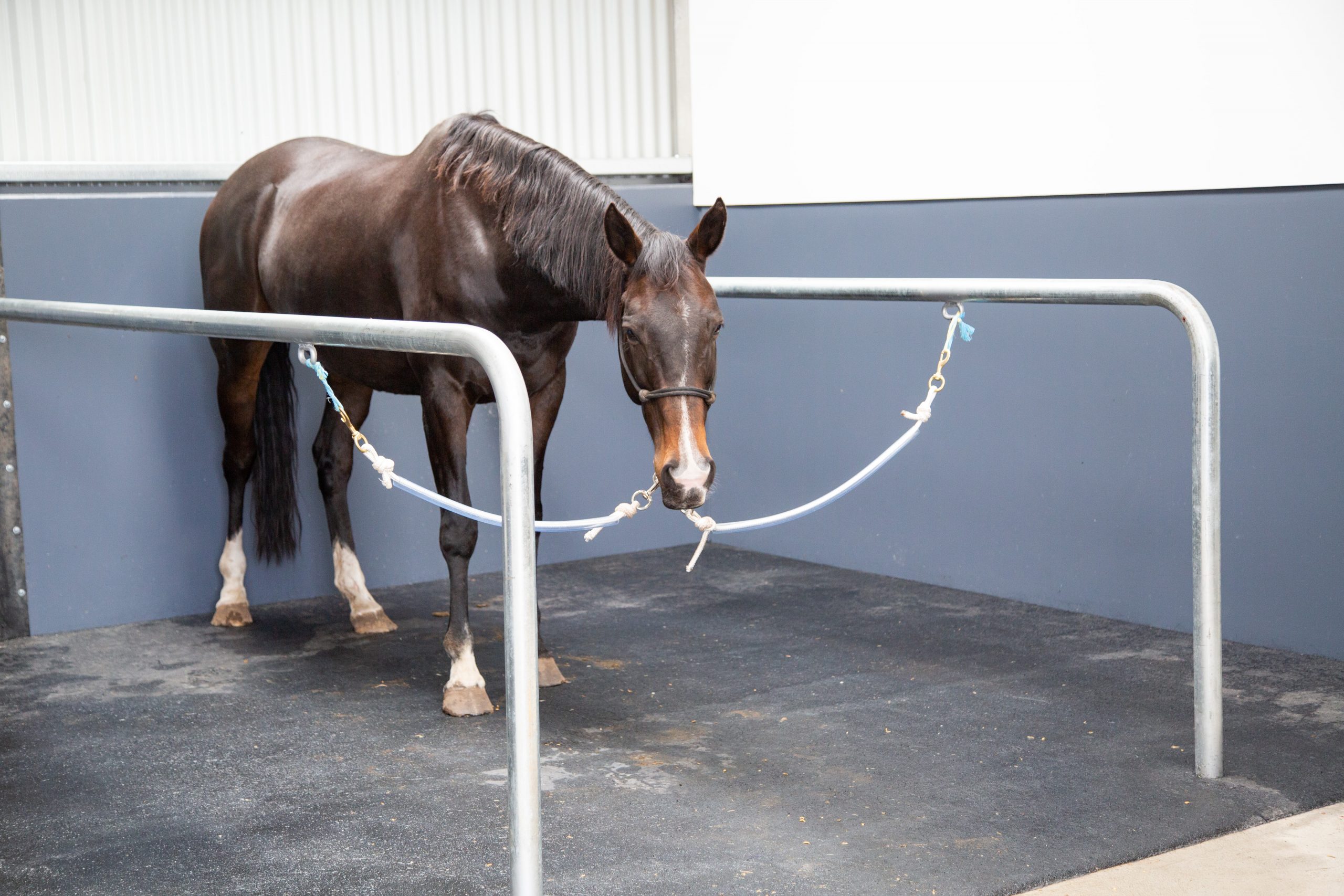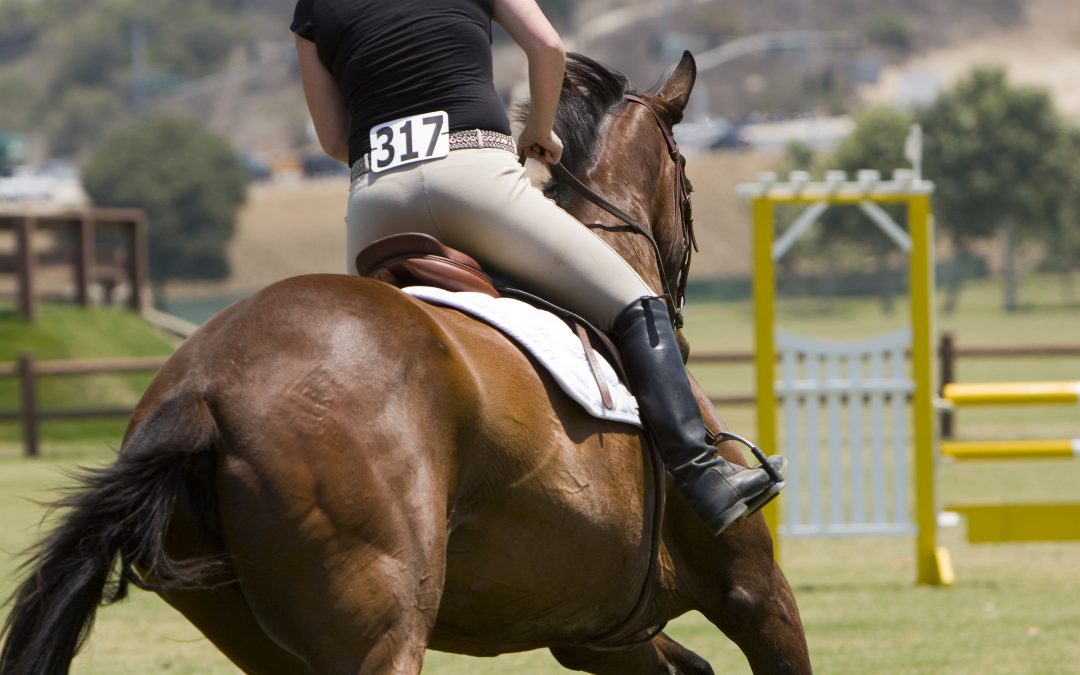When a horse stands naturally, its stifle is locked into a weightbearing capacity. When this occurs, the medial patella ligament fastens over the end of the femur (medial trochlear). When the horse goes to move, this patella ligament slides back over the medial trochlear, allowing the patella to ‘unlock’ and the stifle and hock to flex. “Stifle lock”, or “upwards fixation of the patella”, occurs when this ligament becomes stuck.
CAUSES
There are a range of things which may predispose a horse to this condition. Factors which influence its likelihood include; muscular condition (particularly weak quadriceps), conformation; such as long pasterns, or lack of fitness and immaturity. Injury may also lead to a breakdown of the unlocking mechanism of this joint.
SYMPTOMS
Stifle lock in its more severe form may present as the horse’s hind leg extending out and backwards rigidly, with its fetlock resting on the ground. Horses may also present with milder forms of the condition and not have the obvious extension. In less severe cases the horse’s stifle locks intermittently when the horse is moving. The hind leg will appear to collapse briefly, the stifle often unlocking itself with a loud click. In its most mild form stifle lock can be quite difficult to diagnose. Stifle lock can result in secondary inflammation, damage to the ligaments and osteoarthritis in the stifle joint.
DIAGNOSIS
Locking stifles are diagnosed during a clinical exam. In simple terms, the more severe the condition, the more obvious it is to observe. After ascertaining that a locking ligament problem is presenting, x-rays may be recommended to rule out other causes, and also to check for secondary wear and damage to the joint.
Treatment of Upward fixation of the patella (Stifle Lock)
It is important to note that this condition can occur in young, still growing animals, and as such it is often a condition that a horse may ‘grow out of’. Nevertheless, the following are recommended therapies for the condition.
Directly injecting the patella ligament/s with counterirritants
Injecting the medial patella ligament ± the middle patella ligament with mildly irritant substance may be done with the aim to achieve a localised inflammatory reaction. Causing inflammation of the ligament ultimately has the effect of fibrosis or scarring, which in turn causes the ligament to become shorter, thicker and less elastic. This can reduce the likelihood of stifle lock occurring and has been shown to have good results in horses suffering from mild or intermittent stifle lock.
Exercise
Lack of fitness results in decreased thigh muscle and patellar ligament tone. Muscle strength training to improve the quadriceps muscle can result in improvement of milder cases. Suitable exercise regimes will vary depending on the horse and the severity of the condition. In subtle cases of stifle lock where conformation is relatively good, increased exercise alone may result in resolution of the problem.
Medial patella ligament splitting
This technique involves “splitting” the medial patella ligament. This has a similar effect as counterirritant injections in that it results in localised inflammation and ultimately scarring and thickening of the ligament. It has been shown to have excellent success rates without the potential complications of a medial patella ligament desmotomy.
Corrective farriery
Properly balancing the breakover of the foot can help to optimise the biomechanics of the hindlimb and has been shown to be beneficial, particularly in milder cases.
Surgery
Surgery is usually reserved for very severe cases or those that have not responded well to more conservative and noninvasive treatment options.
Medial patella ligament desmotomy
The traditional surgical treatment option is a medial patellar ligament desmotomy. The purpose of this surgery is to completely cut the medial patellar ligament so it cannot catch or lock over the medial trochlear ridge of the femur. Complications reported from this technique include fragmentation of the distal patella and osteoarthritis of the stifle joint. Consequently, this technique is usually considered a last resort in riding horses. Nevertheless, this approach has excellent success rates, even in severely affected horses.

Most cases of locking stifle can have a favourable outcome, through either conservative therapies, or via surgery.

